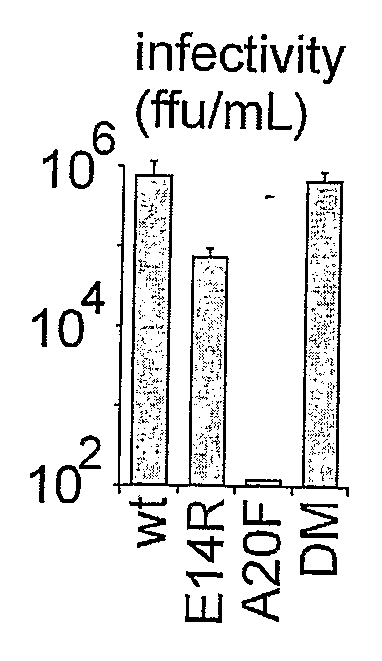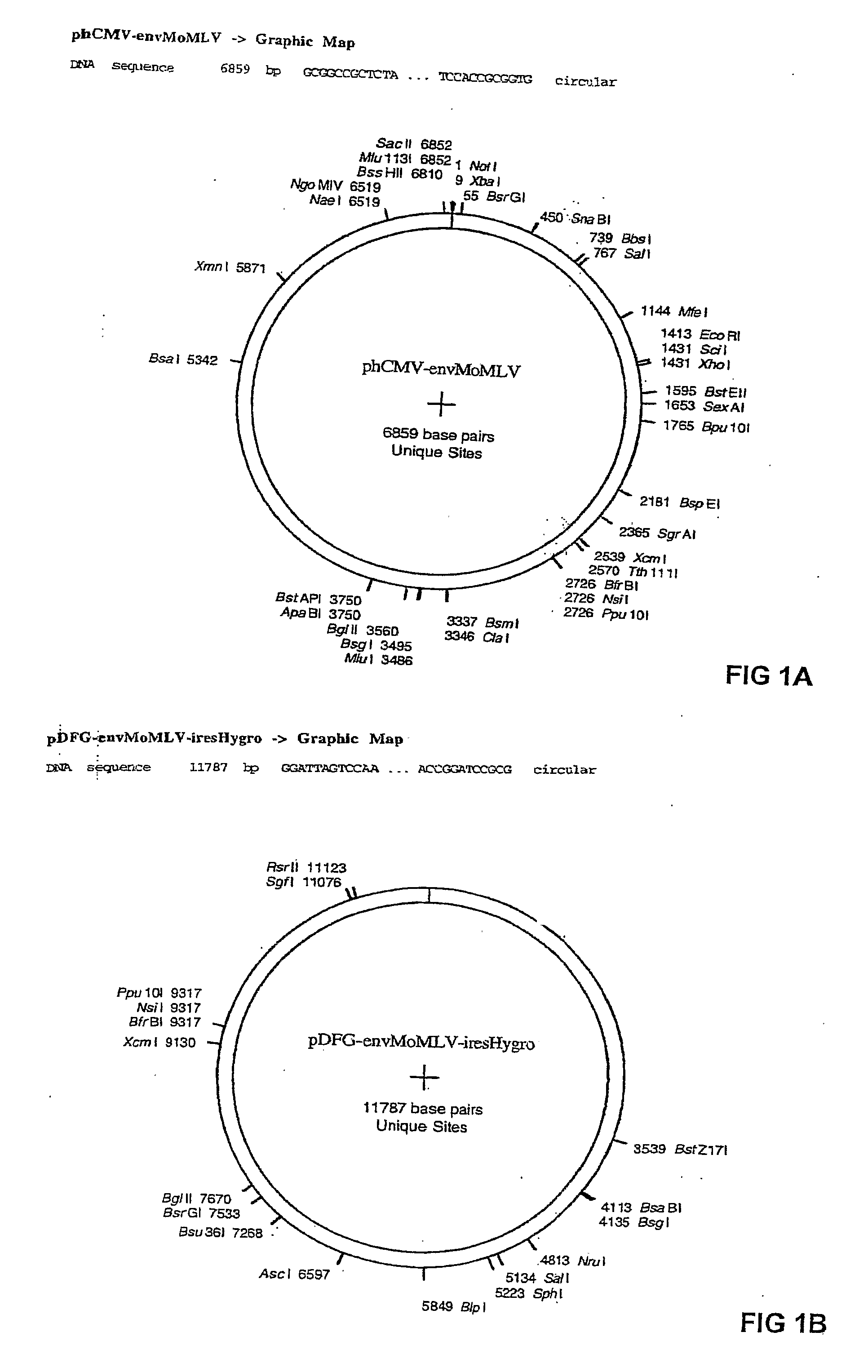Polypeptide Sequence Involved in the Modulation of the Immunosuppresive Effect of Viral Proteins
a polypeptide and protein technology, applied in the field of amino acid sequences, can solve the problems of not being effective, unable to replicate, and requiring multiple dose administration, so as to promote an efficient immune response and reduce the risk of immune system alteration
- Summary
- Abstract
- Description
- Claims
- Application Information
AI Technical Summary
Benefits of technology
Problems solved by technology
Method used
Image
Examples
example 1
[0558] Methods:
[0559] Mice and Cell Lines.
[0560] The cell lines used in these tests were: [0561] 293T, embryonal kidney cells (ATCC CRL11268), [0562] HeLa, human epithelioid carcinoma cells (ATCC CCL2) [0563] MCA205, methylcholanthrene-induced murine fibrosarcoma cells (Shu and Rosenberg, 1985) [0564] NIH 3T3, mouse fibroblasts
[0565] Cells were cultured in DMEM supplemented with 10% fetal calf serum, streptomycin (100 μg / ml) and penicillin (100 units / ml).
[0566] In order to test the immunosuppressive effect of the modified protein, C57BL / 6 and BALB / c mice, 8- to 12-wk-old, obtained from Janvier (Laval, France), were used.
[0567] Constructions.
[0568] The vectors expressing the envelope of HERV-W and HERV-T (phCMV-envW and phCMV-envT) have been previously described (Blaise et al., 2003). In brief, they comprise a promoter (human cytomegalovirus early promoter), the rabbit β-globin intron and polyadenylation sequences. The cDNA of HERV-W env was inserted between the EcoRI sites of ...
example 2
[0617] Methods
[0618] Mice and cell lines: Swiss mice (FV permissive), 10 weeks old, were obtained from Janvier (Laval, France). The cell lines 293T (ATCC CRL11268), HeLa (ATCC CCL2), NIH / 3T3 (ATCC CRL-1658) and MCA205 (REF) were cultured in DMEM supplemented with 10% fetal calf serum, streptomycin (100 μg / ml) and penicillin (100 units / ml).
[0619] Constructions: Plasmids p57 (Oliff et al. J Virol 33, 475-86 (1980)) and pET28(+)b (Novagen) were used.
[0620] phCMV-envFV was constructed as phCMV-envMPMV (Example 1), using p57 as PCR template and primers 16 and 17. Mutant derivatives were constructed by inserting into the ClaI / AvrII opened vector two PCR products, the first digested with ClaI, the second with AvrII. These fragments were generated with phosphorylated primer pairs 1-2 and 3-4 for E14R mutation (which corresponds to the E561R mutation of the full length ENV), 1-5 and 3-6 for A20F mutation (which corresponds to the A567F mutation of the full length ENV), and 1-2 and 4-6 for...
example 3
[0647] Methods
[0648] Mice and cell lines: C57BL / 6 and SCID mice, 8-12 weeks old, were obtained from Janvier (France). B16 (murine melanoma cell line of C57BL / 6 origin, EACC 94042254) and 293T (human embryonic kidney cells, ATCC CRL11268) were maintained in DMEM supplemented with 10% heat-inactivated foetal calf serum and antibiotics.
[0649] Constructions: a plncxH1 expression vectors derived from the plncx (Miller and Rosman Biotechniques 1989;7: 989-90) and the pSUPER (Brummelkamp et al. Science 2002;296: 550-3) vectors was constructed to generate short transcripts directed against MelARV (targeted to the genomic transcript within the gag sequence; nt positions 1220-1238 from the start codon), or against the green fluorescent protein transcript (nt position 215-233 from the start codon) as a control. They were obtained by first inserting annealed 64-mer oligonucleotides (sequences in FIG. 1B) into pSUPER opened at the BglII and HindIII sites, followed by introduction of the BamHI-...
PUM
| Property | Measurement | Unit |
|---|---|---|
| nucleic acid | aaaaa | aaaaa |
| TM | aaaaa | aaaaa |
| min-width | aaaaa | aaaaa |
Abstract
Description
Claims
Application Information
 Login to View More
Login to View More - R&D
- Intellectual Property
- Life Sciences
- Materials
- Tech Scout
- Unparalleled Data Quality
- Higher Quality Content
- 60% Fewer Hallucinations
Browse by: Latest US Patents, China's latest patents, Technical Efficacy Thesaurus, Application Domain, Technology Topic, Popular Technical Reports.
© 2025 PatSnap. All rights reserved.Legal|Privacy policy|Modern Slavery Act Transparency Statement|Sitemap|About US| Contact US: help@patsnap.com



